7fps – marketing point or real benefit?
ALL the current DSLRs made – whether by Canon, Nikon or even Sony with the A700 and A900 – state their maximum fps continuous shooting speed as being with NO autofocus, and NO exposure metering changes. There’s a lot of talk on forums about the 7fps of the new Alpha 550 – 14.3 megapixel CMOS APS-C with a good high ISO capacity – being in some way crippled because it has been made clear by Sony that this speed applies to a ‘lockdown’ of focus and exposure with the first frame. This is not surprising as it’s a quiet, mirror-up mode using the off-sensor live view to maintain contact.
Turning AF off is actually a standard when expressing maximum frame rate. All the makers state that if you enable AF-C with focus priority (focus changes between shots) you won’t get maximum speed – and if you get maximum speed, you won’t get AF-C properly. If you even try to shoot fast moving subjects at maximum speed with most AF-C systems, my experience is that for all but the simplest action (like a race car circuit) the hit rate of sharp frames to unsharp ones varies a lot and can be as low as only 50% sharp with the highest-end pro Canon or Nikon.
That’s one of the many reasons press and sports photographers machine-gun thousands of frames. They want the sharp ones!
But just how much of an advance is 7fps? Actually, it’s not much at all. Whether 6.3ps, 6.5fps, 7 or 8fps makes little difference. For many years 5fps has been sufficient to secure intermediate positions in most common actions such as human beings running or horses galloping. But 5fps may be synchronised with an action. When shooting our local racecourse, 5fps turned out to create only two phases of the horse gallop, so every alternate frame had a similar leg position. 7fps would be out of phase with that speed of gallop, and create many different leg positions.
It might be in phase with a faster action. Let’s say a drummer was beating a drum at exactly 10 beats per second, and you shot with a 10fps camera. You would get 10 identical shots. But with a 7fps speed you would get a range of positions. This is an example where a slower frame rate is more useful. It’s also why I choose, personally, to make very little use of continuous shooting and to rely on single shots with timed reaction and anticipation. Then along comes a drummer beating at 7 beats per second and of course, 7fps doesn’t work…
So, get it into perspective. What any camera needs is a range of sequence shooting frame rates; what any photographer needs is to learn precision timing for those situations where machine-gunning does not work. Both single frame and continuous have their uses. And if the A550 does not do AF or AE during 7fps shooting, guess what – it’s exactly the same as any other DSLR, except that price for price it is performing well out of its midrange consumer class!
Here is a 5fps action sequence covering 2 seconds (11 frames) on the Alpha 900:
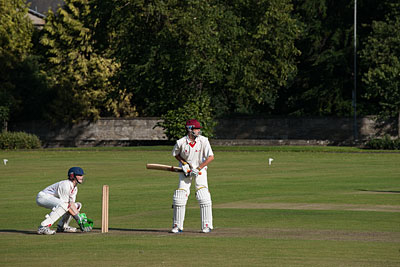
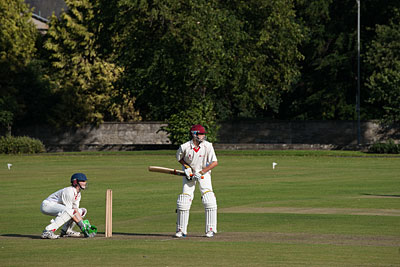
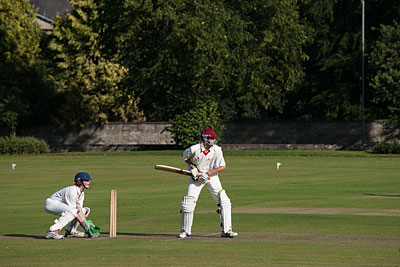
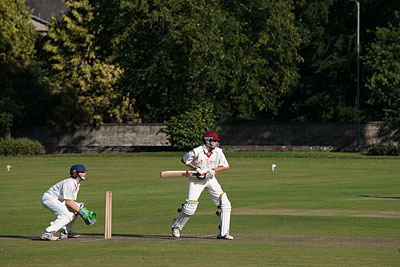
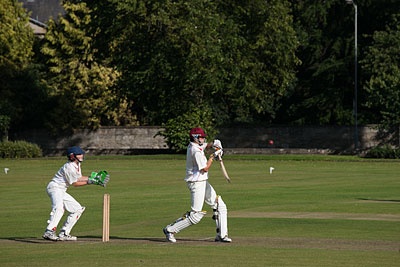
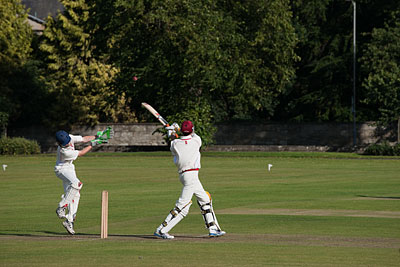
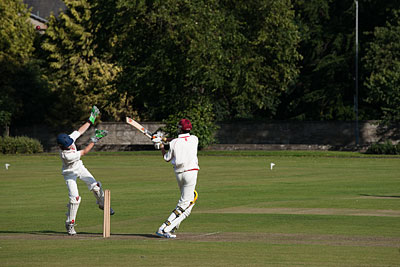
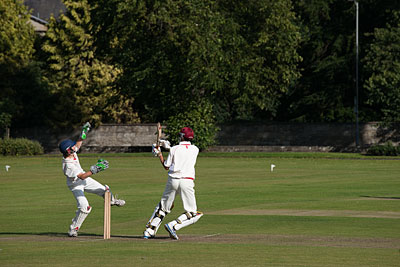
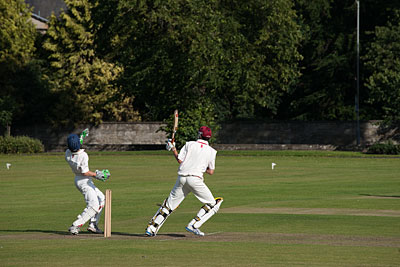
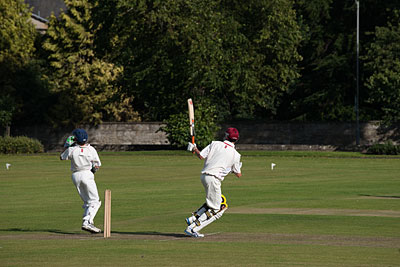
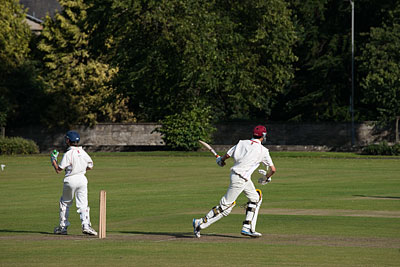
This a true 5fps sequence – AF-S, not continuous, lock focus, lock exposure, hold the shutter button down. The cricket ball is only present in the frame for shots 5, 6 and 7 out of 11 – and the critical moment is missed. Shooting the same match and player using single frame (one shot per bowled ball) I was able to get the ball within a foot of the bat every time. With 5fps sequence shooting, I hardly ever got the optimum shot. Would 7fps solve the problem? There would have been one more exposure with the ball in the frame. To be really sure of the best sports action pictures with continuous drive, you simply need the fastest fps rate you can get. Even 11fps is not enough.

Here is a Canon EOS 50D maximum speed sequence (the camera is not panned, as each rider was shot was shot with a short burst coming over the jump). There’s not a huge difference between 5fps and 6.5fps in this situation.
I won’t show you the results of my 2.5fps sequence test with the Alpha 350. With cricket, it was a pointless exercise and some of the sequences had not a single shot in them of any use. Again, timed single frames – despite the less responsive feel of the A350 versus the hair-trigger firing of the A900 – produced a majority of ‘keepers’ with the ball correctly caught just around the moment of impact with the bat. The Alpha 550 is essentially like an Alpha 350 in terms of the shutter response handling and viewfinder, though the AF module is improved. I have had no real trouble using the A350 and A380 for action shots, and while a complaint may be made that 7fps and high ISO CMOS belongs in an Alpha 700 type body not a 300-350 type body, look at the price point. It will work, and something better is coming – see the next page.

Sir,
Thank you VERY much for the very prompt response.
And once again, you have added a HUGE amount to my education in photography.
Thanks.
Regards,
plevyadophy
The Press already uses frames from video when needed, I’ve been asked many times over the years to extract frames from videos (even going to old tape days) for newspaper use. The HD Video standards – whether 1280 x 720, or 1920 x 1080 – are so much bigger than old VHS, and the information is far more detailed. As I hope I have shown, a Nikon 24fps 720p video is not far off being the same as a 24 fps motordrive sequence with a ‘One Megapixel’ camera. The Canon 5D MkII when it first came out made the equivalent of 2 megapixel still frames, but at very slow shutter speeds – generally, 1/60th or so was the fastest.
The Press users were frustrated in the extreme – if they shot video, the images were sharp enough to extract for half page newspaper use, but they could not freeze movement. Canon then introduced new firmware which allowed the 5D MkII videos to be shot with full control over shutter, aperture and ISO instead of programmed control. The camera can now be safely used to film video-takes of events, knowing that if a really great moment happens, a pin sharp 2 megapixel frame can be extracted with 30 fps ‘drive’ to catch exactly the right expression or action.
The EOS 500D is not much use as it lacks the firmware and shoots everything at slow shutter speeds – bump up the ISO, and it just stops the lens down more! The Nikon D90, D5000 and D300S are all pretty useful as using A mode can force fast shutter speeds in video. Regular video producers do not like fast shutters, they think it makes action look jerky and prefer slight blur. I love video with fast shutter speeds.
Press shooters are often being trained up to shoot video clips, newspapers can syndicate to TV or use vids on their websites. But the majority of shots continue to be still frames. There are predictions (not mine) that one day, it will all be video, and all still frames will be extracted from even higher quality HD video than we have today.
If you want to analyse someone’s golf swing, 5fps is useless, 10fps is nearly useless, 24fps is acceptable, 30fps is good and 60fps is perfect.
David
Dear Sir,
Thanks VERY much for the article, it really was an education. It really is interesting how many of us, myself included, hanker after this spec and that spec without really FULLY understanding what the benefits may or may not be. So now, thanks to you I am no longer that impressed by 9fps and 11fps cameras, nor will I feel short changed if my cam does 5fps and my pal’s does 7fps.
You stated that: “I’m not confirming anything (I have no more information than others), the article is intended as a general discussion of the value of higher fps rates and the big difference which HD video makes to catching the right moment – as the press is finding out mainly with the 5D MkII at 30fps and 1080p.”
Sorry for being a bit dim but what do you mean exactly? What is the big difference that HD video makes to catching the moment? And what is it that the press are finding out with the 5D MkII?
Thanks in advance.
Regards,
plevyadophy
I’m not confirming anything (I have no more information than others), the article is intended as a general discussion of the value of higher fps rates and the big difference which HD video makes to catching the right moment – as the press is finding out mainly with the 5D MkII at 30fps and 1080p.
The 5fps of the A700 is strictly limited to MANUAL focus (not even locked AF-S) and shutter speeds of 1/250th or shorter. Of course, it does C-AF during sequences, but you don’t get 5fps. You get whatever it takes to maintain focus, and even that is not always guaranteed. One of the main problems with AF-C plus Hi sequence shooting is that if the focus accidentally shifts to a different plane (background) while following a subject, it thinks the focus is confirmed and you get a useless frame – it then has trouble getting back to the subject.
David
Thanks for the article. There’s seems to be a lot of conflicting ideas on this point though, for example the slow down in A700 fps in low light suggests some role of AE cycle each frame. By the way are you confirming the 7 fps spec for the A550 or just assuming the rumours are right?